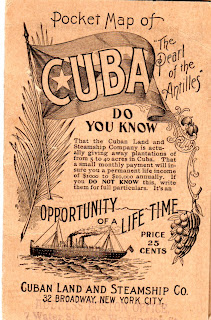Canal in downtown St. Petersburg, near the Hermitage
The Day we took the head photographer to Leningrad Moscow , but one day we took our leading enlisted photographer, a black Air Force Sergeant, to Leningrad (Now re-named St. Petersburg
They normally would follow our car with another car full of goons. But this day, they had four cars, switching off amongst one another. These were all Soviet Zhigulis, the Russian version of the Fiat, made in a huge factory built with the help of the Italian Fiat company in a city named Tolyatti (after Italian Communist Togliatti) several hundred miles southeast of Moscow.
Often I would make notes about what I wanted to observe on our drive that day, and I would write these on water-soluble rice paper, which I could easily pop in my mouth if we should be apprehended. This special paper would dissolve at once.
When, with the four cars of goons following us I thought we would get hauled out, I decided it was time to swallow my notes. However, when you are scared, which I was, your mouth dries up so much that you can’t even dissolve the paper.
We were driving next to one of the many canals that run through Leningrad Griboyedova Canal
Wrong! As I should have suspected in icy, frozen Leningrad
At any rate, we never got apprehended. The Sergeant had a good ride around town.
I would make a lousy spy.
Women’s Day in Leningrad
We took the Midnight Red Arrow from Moscow to Leningrad
One of the things we did a lot of was "Order-of-Battle". We had to report ships in port, including boats and ships that just moved around the canals and rivers of the USSR USSR
One of our favorite walks was along the Neva River at Schmidt’s Bank, in Leningrad Russia Leningrad
Whenever we would take these walks, we tried to take along our cameras and collect photos of interesting things. Photography in this area was forbidden, however.
The KGB assigned an elderly “goon” that attachés named “Fats.” He and some of his associates generally were around to follow us wherever we walked, or drove, and to make our job harder, or impossible. They wore the red armbands of “Druzhniki,” or “concerned citizens.” Sort of like elderly volunteers who operate as school crossing guards, except these were assigned to look after the foreign “spies.” The Soviets considered all foreign diplomats spies—they hadn’t changed their attitude toward foreigners in centuries.
One day, March the 8th, 1983 to be exact, it was International Women’s Day. Now, in fact, the Soviets didn’t give much of a hoot about women’s rights, except the right of old women to stand in the street all day long in the winter, smashing ice with a heavy iron rod.
But this day, as we arrived to do our job of collecting intelligence in Leningrad
I was traveling with my assistant, Pierce Crabtree, a big, burly former Navy football player. With no KGB to bother us, we went wild photographing shipyards and ships and everything we could see. We were driving a Soviet version of a Land Rover, called a “Niva.” We thought this would be a great day to check out some radar installations near the Czars’ summer palace at Petrodvorets. However, somewhere between Kipen’ and Ropsha, we got stuck in the snow.
If the KGB had been around, we would not have been able to get that far. Now, free to travel, we had gone and gotten ourselves in trouble. The snow was pretty deep.
Fortunately, along came a bus full of Russians. The driver and some of the passengers got out and helped push us out of the snowbank.
Now for some books and papers from The Personal Navigator:
The Locks – Charles River Dam, from Boston
Boston, Its Byways & Highways, Being Twenty-five Drawings Reproduced in Photogravure by John Albert Seaford ca. 1916 Boston Boston
(at left is 1722 map, reproduced in 1853)
Theodore Roosevelt (1858-1919)
Roosevelt: Fear God and Take Your Own Part by Roosevelt, Theodore 1916 New York , NY Roosevelt dedicated this book to Julia Ward Howe, and includes the words of "The Battle Hymn of the Republic" in the introduction. Roosevelt has always been a fighter, and he is very clear in his dislike of "Professional Pacifists". He writes about the injustices caused by Pancho Villa and the Mexicans against Americans South of the Border, and America Germany
Roosevelt: State of New York in Memoriam Theodore Roosevelt Born: October 27, 1858 Died: January 6, 1919 1919 Albany , NY : Legislature of the State of New York Massachusetts
Soviet Theatre ca. 1950 Moscow , USSR
Contact me at scoulbourn1@verizon.net







I have been telling your story all wrong, or maybe it was another story. This is how it really goes: Your bosses wanted you to take pictures of certain ships, and your notes were on rice paper. When you saw you were about to be questioned, you threw the notes in the water. A goon fished them out, and said "naughty naughty naughty," and you got to visit America sooner than anticipated. Or something similar.
ReplyDelete